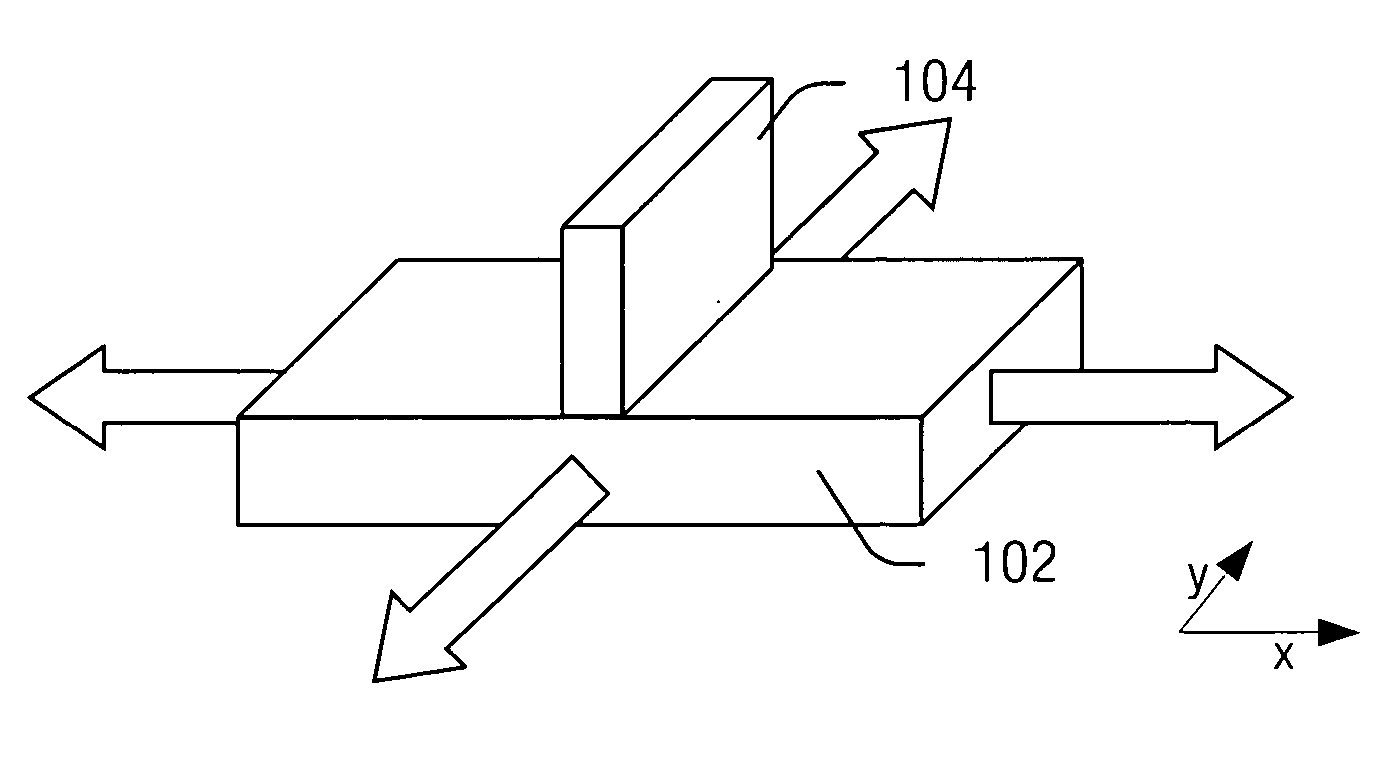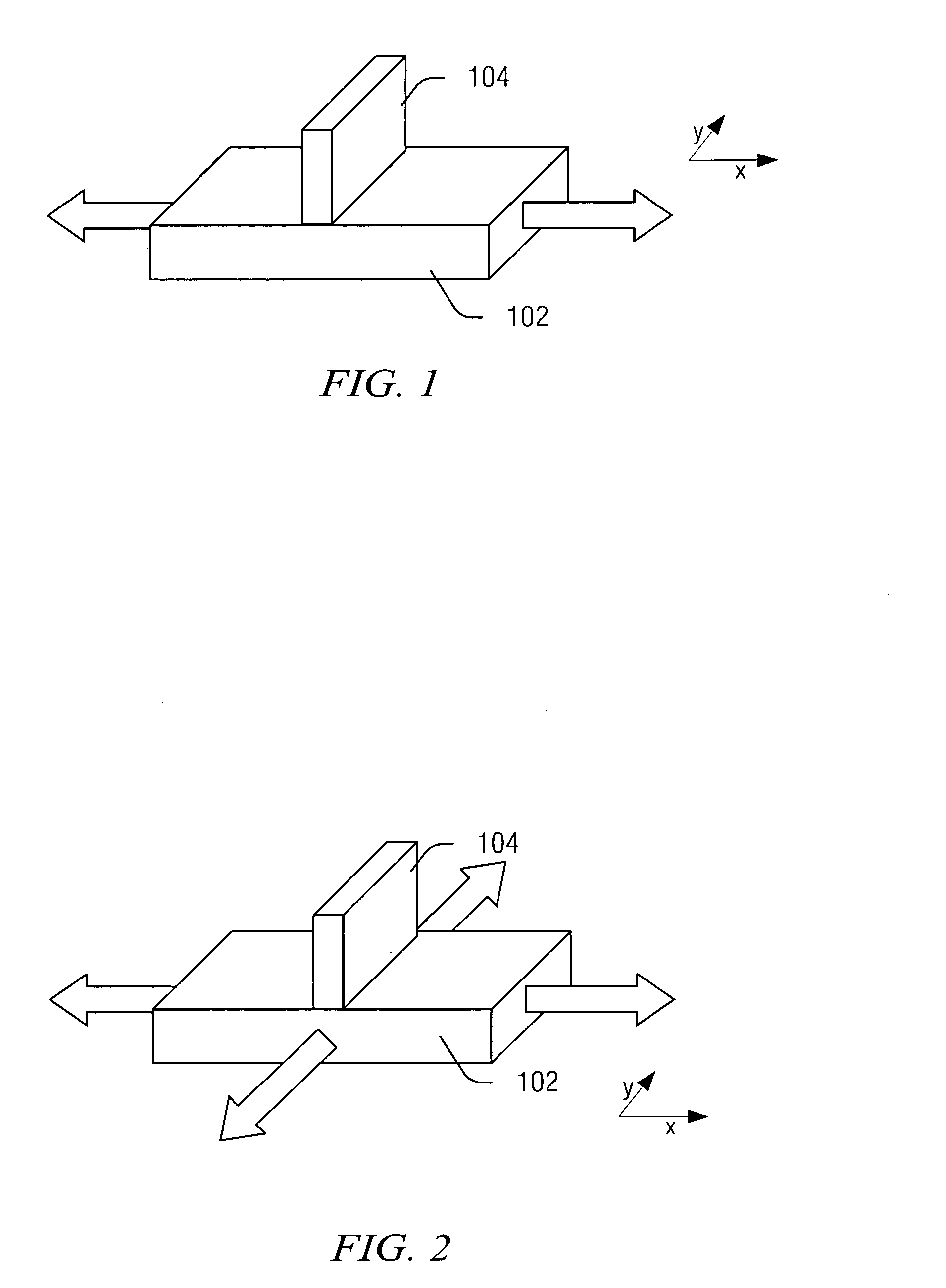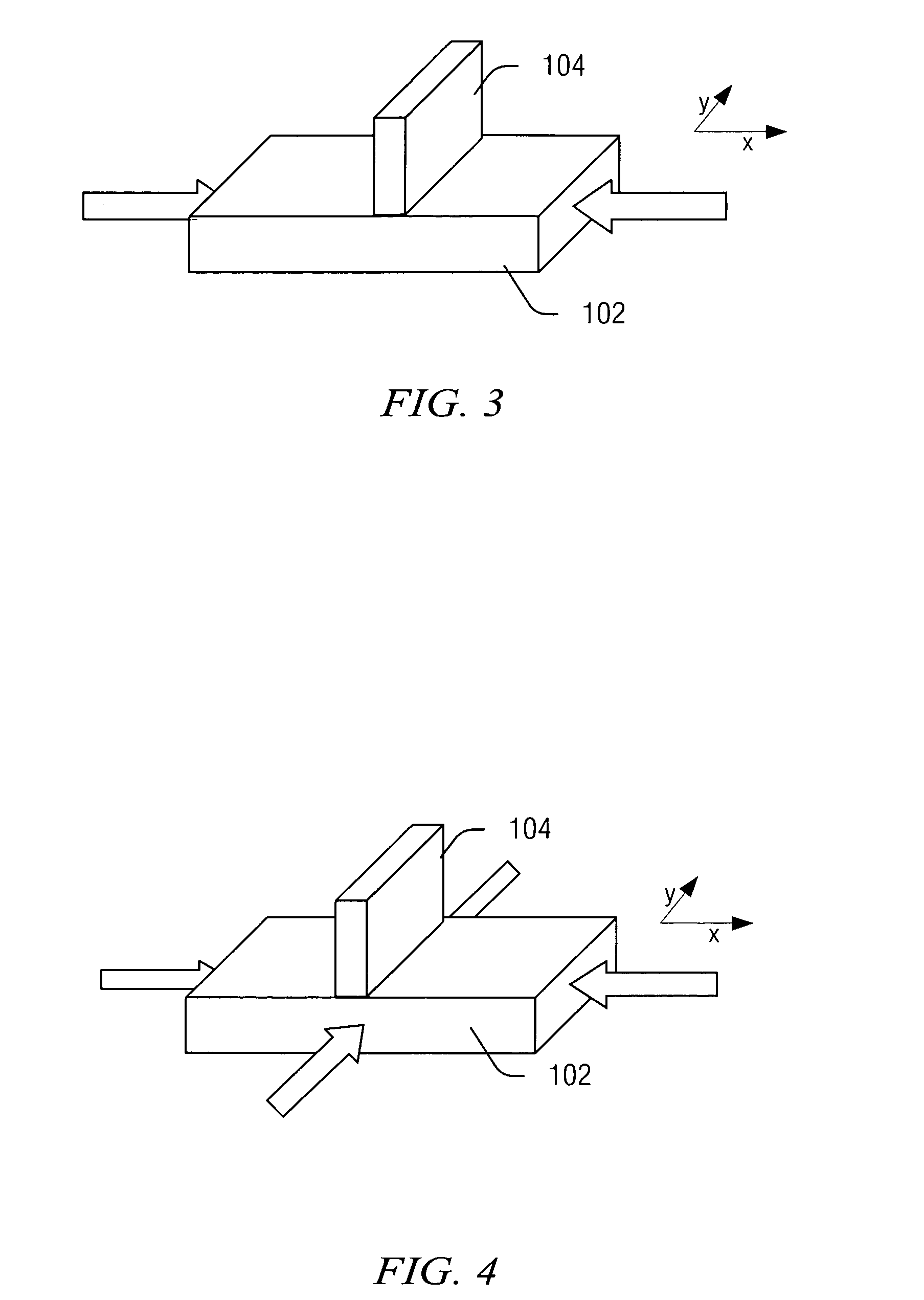Transistor design and layout for performance improvement with strain
a technology of strain and strain, applied in the direction of semiconductor devices, basic electric elements, electrical apparatus, etc., can solve the problems of short channel effect, deformation of mobility, negative impact on channel mobility, etc., to facilitate electron and hole mobility, facilitate performance and fabrication of semiconductor devices, and improve electron mobility
- Summary
- Abstract
- Description
- Claims
- Application Information
AI Technical Summary
Benefits of technology
Problems solved by technology
Method used
Image
Examples
Embodiment Construction
[0021] The present invention will now be described with respect to the accompanying drawings in which like numbered elements represent like parts. The figures provided herewith and the accompanying description of the figures are merely provided for illustrative purposes. One of ordinary skill in the art should realize, based on the instant description, other implementations and methods for fabricating the devices and structures illustrated in the figures and in the following description.
[0022] There is an ongoing need to scale components and features of semiconductor devices. Scaling can reduce costs of fabrication by fitting more components on a single device and can improve performance by shortening paths of operation. As the dimensions on components of a semiconductor device (e.g., chip) continue to be reduced, a key component is a transistor, and a key dimension of the transistor is the gate length. For example, an increase in operation from a 400 Mhz semiconductor device to a ...
PUM
 Login to View More
Login to View More Abstract
Description
Claims
Application Information
 Login to View More
Login to View More - R&D
- Intellectual Property
- Life Sciences
- Materials
- Tech Scout
- Unparalleled Data Quality
- Higher Quality Content
- 60% Fewer Hallucinations
Browse by: Latest US Patents, China's latest patents, Technical Efficacy Thesaurus, Application Domain, Technology Topic, Popular Technical Reports.
© 2025 PatSnap. All rights reserved.Legal|Privacy policy|Modern Slavery Act Transparency Statement|Sitemap|About US| Contact US: help@patsnap.com



